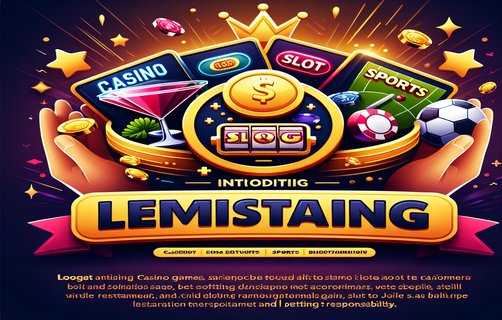Economics of Satta: Analyzing Game Strategies and Their Impact on the Economy
The world of gambling, particularly in the context of main bazar satta, exhibits a fascinating interplay of economic principles. The combination of chance and strategy results in a marketplace that can be studied through various economic lenses. Understanding the actions of practitioners and the mechanisms of decision-making can yield insights that transcend the realm of simple games of chance.

From the perspective of practitioners, the real-time action inherent to satta draws players into a dynamic ecosystem. Just as in any market, the players must respond swiftly to changing conditions. Unlike traditional gambling scenarios where outcomes are solely luck-based, poker and other strategy-oriented games introduce layers of complexity. Players continuously observe opponents and adjust their tactics in response to displayed behaviors, akin to how economic agents react to market signals.

Game strategy is a critical aspect of satta, particularly in poker where understanding the psychology of others is paramount. Each player comes with their own set of skills, experiences, and emotional intelligence, allowing for a myriad of tactical approaches. Evaluating one's equity—or the mathematical expectation of winning relative to potential losses—becomes an integral part of the strategy. This idea finds a parallel in economic theory, where rational actors seek to maximize utility given their constraints. Players assess their positioning not only in terms of game mechanics but also by forecasting their opponents' potential moves based on historical patterns and psychological cues.
The element of in-game animations also plays a significant role in engaging players. Visual outputs and dynamic graphics create a richer experience, which can significantly influence a player’s decision-making process. Similar to consumer behavior in economic markets, the allure of vibrant displays can lead to increased participation, ultimately inflating potential jackpots and reshaping overall demand dynamics. Such consumer engagement highlights the importance of sensory experiences in economic transactions.
Calling ranges in poker exemplify the nuanced decision-making processes inherent to all forms of gambling. Players must be mindful not only of the cards they hold but also of the perceived strength of their opponents’ hands. This factor ties back to economic theories regarding information asymmetry, where one party holds more information than the other. The ability to assess and manipulate the perceptions of strength can lead to successful outcomes, much like businesses strategically positioning themselves against competitors. Thus, the strategic depth involved in poker is reflective of market competition, where identifying and exploiting inefficiencies can lead to significant advantages.
The excitement surrounding lottery jackpots further exemplifies the behavioral economics of gambling. The potential for life-changing sums of money attracts individuals, magnifying the stakes at play. The notion of 'buying a ticket' resonates with consumer choice theories, where individuals assess the odds of winning against the cost of participation. This delicate balance often results in individuals who, under rational economic theory, would not participate in games of chance opting to engage due to the promotional allure of massive jackpots. The psychology behind such decisions offers insight into how expectations and perceived value can manipulate demand in a seemingly arbitrary market.
Overall, analyzing the landscape of main bazar satta allows us to analyze from multiple angles. The convergence of strategic gameplay, real-time responsiveness, and individual psychology creates an intricate economic domain that blurs the lines between amusement and investment. The implications extend beyond personal fortune; they reflect the broader economic forces at play within society. By understanding the motivations and strategies of practitioners, we can uncover insights that resonate through the wider economic framework, highlighting how entertainment and economics are deeply intertwined in engaging and sometimes surprising ways.
